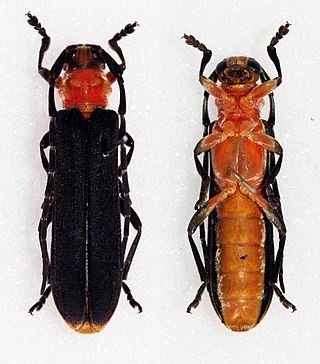In Greek mythology, Tlepolemus was the leader of the Rhodian forces in the Trojan War.

Lamiinae, commonly called flat-faced longhorns, are a subfamily of the longhorn beetle family (Cerambycidae). The subfamily includes over 750 genera, rivaled in diversity within the family only by the subfamily Cerambycinae.

Elseya is a genus of large side-necked turtles, commonly known as Australian snapping turtles, in the family Chelidae. Species in the genus Elseya are found in river systems in northern and northeastern Australia and throughout the river systems of New Guinea. They are identified by the presence of alveolar ridges on the triturating surfaces of the mouth and the presence of a complex bridge strut.

Diploglossidae is a family of anguimorph lizards native to the Americas, with most genera being endemic to Hispaniola. Most members of this family are known as galliwasps. They were formerly considered a subfamily of Anguidae, but genetic evidence has shown them to be less closely related to other members of Anguidae than Anniellidae is.

The Gulf snapping turtle or Lavaracks' turtle is a large species of freshwater turtle in the sidenecked family Chelidae. The species is endemic to northern Australia in northwest Queensland and northeast Northern Territory. The species, similar to other members of the Australian snapping turtles in genus Elseya, only comes ashore to lay eggs and bask. The Gulf snapping turtle is a herbivore and primarily consumes Pandanus and figs.

Bimiini is a tribe of beetles in the subfamily Cerambycinae, containing the following genera and species:

Calydon is a genus of longhorn beetles in the family Cerambycidae. There are at least two described species in Calydon, found in Argentina and Chile).

Pronuba is a genus of long-horned beetles in the family Cerambycidae. There are about five described species in Pronuba, found in Central and South America.
Eligmodermini is a tribe of beetles in the subfamily Cerambycinae, containing the following genera and species:

Hexoplon is a genus of beetles in the family Cerambycidae, containing the following species:
Compsibidion is a genus of beetles in the family Cerambycidae, containing the following species:

Cycnidolon is a genus of beetles in the family Cerambycidae, containing the following species:

Desmiphorini is a tribe of longhorn beetles of the subfamily Lamiinae.
Aliboron is a genus of beetles in the family Cerambycidae, containing the following species:

Crossotini is a tribe of longhorn beetles of the subfamily Lamiinae. It was described by Thomson in 1864.
Epicasta is a genus in the longhorn beetle family Cerambycidae. There are at least two described species in Epicasta.
Enotes is a genus of flat-faced longhorns in the beetle family Cerambycidae. This genus has a single species, Enotes lifuanus, found in New Caledonia.

Linda is a genus of longhorn beetles of the subfamily Lamiinae, containing the following species:
Tlepolemus puerulus is a species of beetle in the family Cerambycidae. It was described by Thomson in 1864. It is known from South Africa.

Prosphilus is a genus of Long-Horned Beetles in the beetle family Cerambycidae. There are at least four described species in Prosphilus, found in Sub-Saharan Africa.










